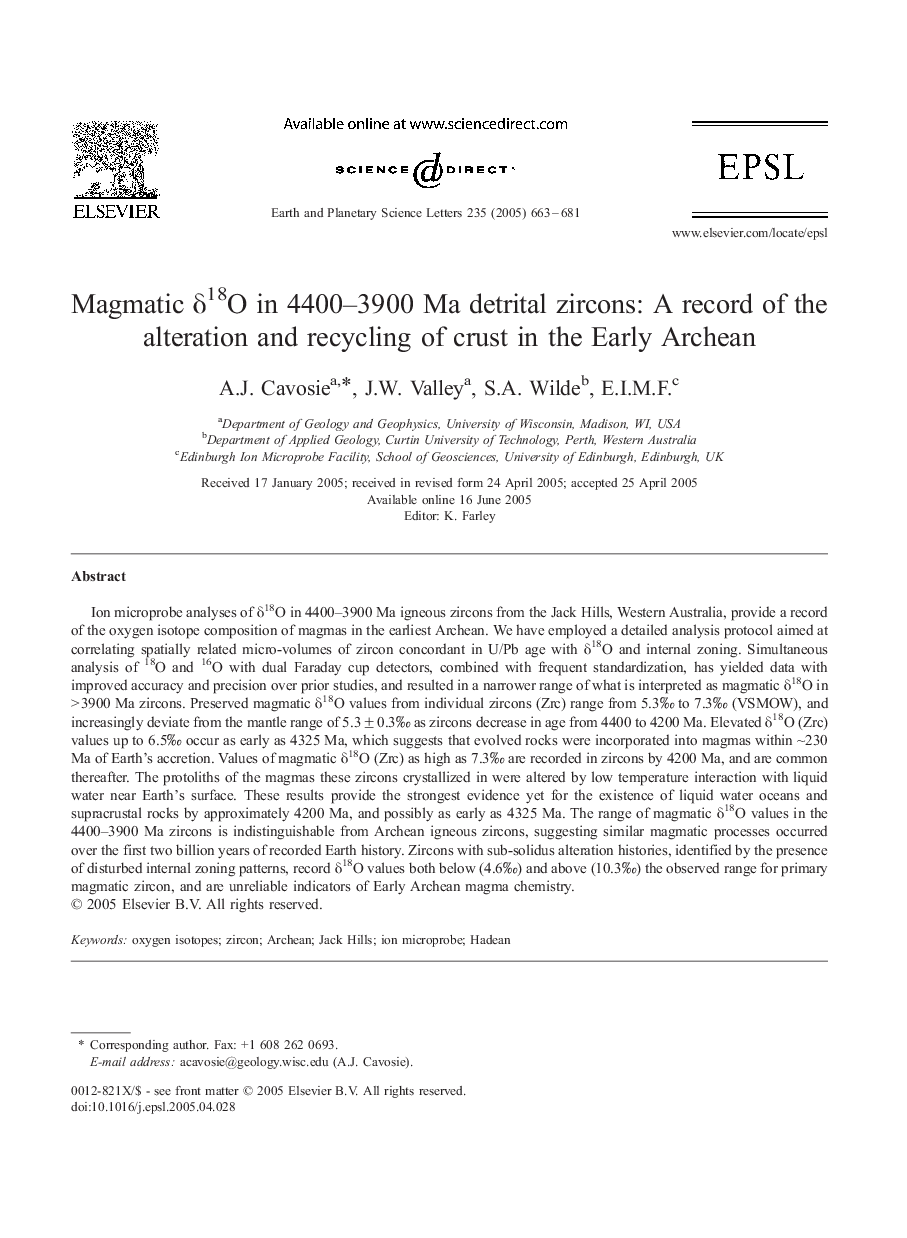| Article ID | Journal | Published Year | Pages | File Type |
|---|---|---|---|---|
| 9522219 | Earth and Planetary Science Letters | 2005 | 19 Pages |
Abstract
Ion microprobe analyses of δ18O in 4400-3900 Ma igneous zircons from the Jack Hills, Western Australia, provide a record of the oxygen isotope composition of magmas in the earliest Archean. We have employed a detailed analysis protocol aimed at correlating spatially related micro-volumes of zircon concordant in U/Pb age with δ18O and internal zoning. Simultaneous analysis of 18O and 16O with dual Faraday cup detectors, combined with frequent standardization, has yielded data with improved accuracy and precision over prior studies, and resulted in a narrower range of what is interpreted as magmatic δ18O in > 3900 Ma zircons. Preserved magmatic δ18O values from individual zircons (Zrc) range from 5.3â° to 7.3â° (VSMOW), and increasingly deviate from the mantle range of 5.3 ± 0.3â° as zircons decrease in age from 4400 to 4200 Ma. Elevated δ18O (Zrc) values up to 6.5â° occur as early as 4325 Ma, which suggests that evolved rocks were incorporated into magmas within â¼230 Ma of Earth's accretion. Values of magmatic δ18O (Zrc) as high as 7.3â° are recorded in zircons by 4200 Ma, and are common thereafter. The protoliths of the magmas these zircons crystallized in were altered by low temperature interaction with liquid water near Earth's surface. These results provide the strongest evidence yet for the existence of liquid water oceans and supracrustal rocks by approximately 4200 Ma, and possibly as early as 4325 Ma. The range of magmatic δ18O values in the 4400-3900 Ma zircons is indistinguishable from Archean igneous zircons, suggesting similar magmatic processes occurred over the first two billion years of recorded Earth history. Zircons with sub-solidus alteration histories, identified by the presence of disturbed internal zoning patterns, record δ18O values both below (4.6â°) and above (10.3â°) the observed range for primary magmatic zircon, and are unreliable indicators of Early Archean magma chemistry.
Related Topics
Physical Sciences and Engineering
Earth and Planetary Sciences
Earth and Planetary Sciences (General)
Authors
A.J. Cavosie, J.W. Valley, S.A. Wilde, E.I.M.F. E.I.M.F.,
